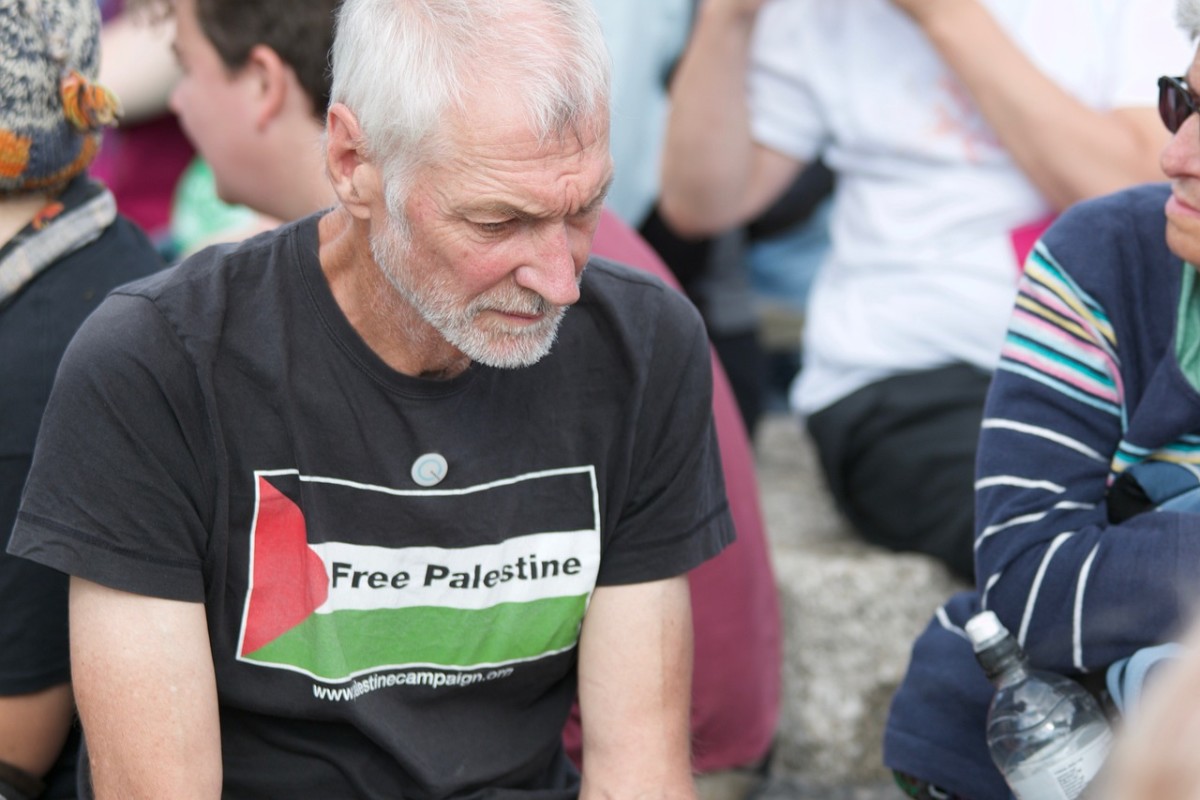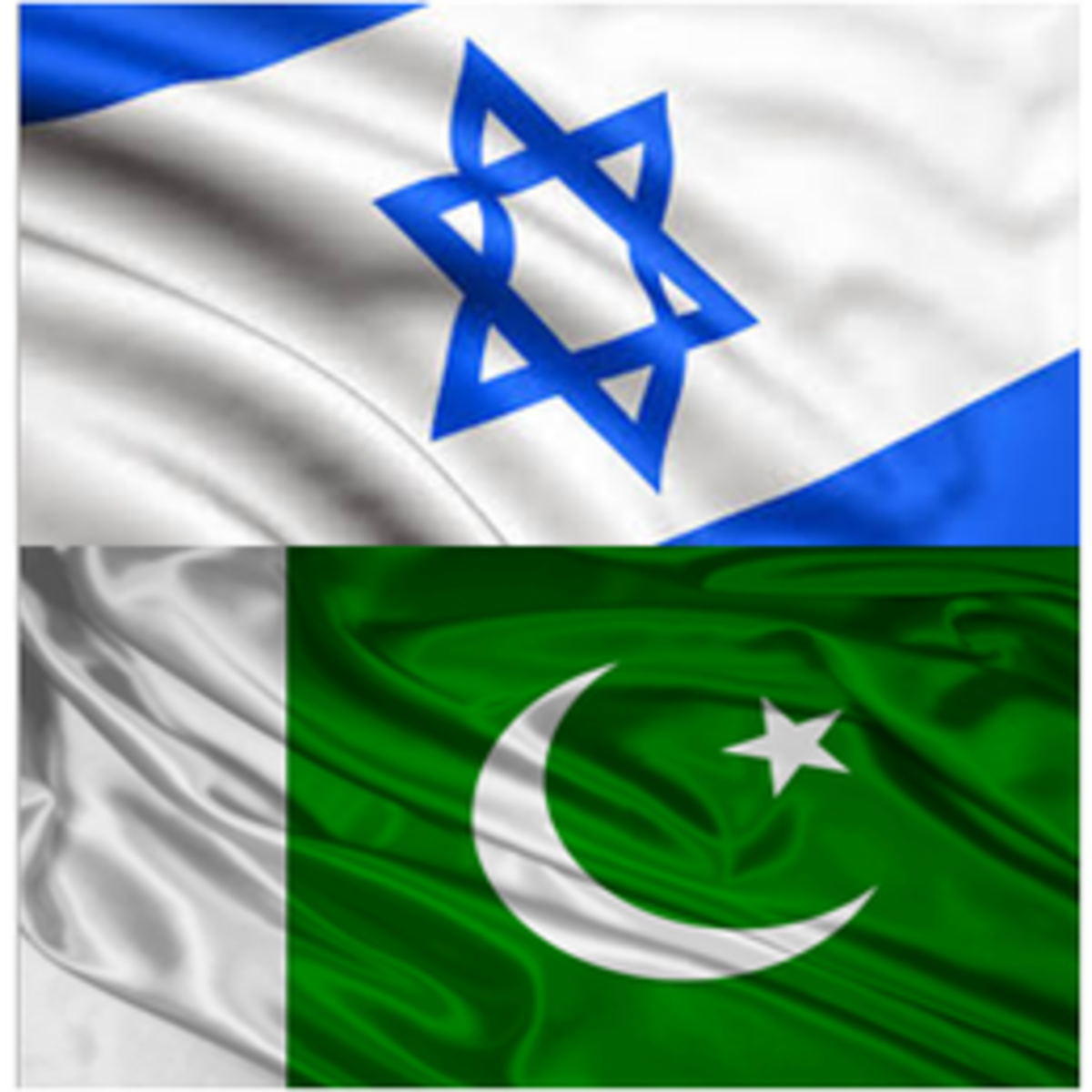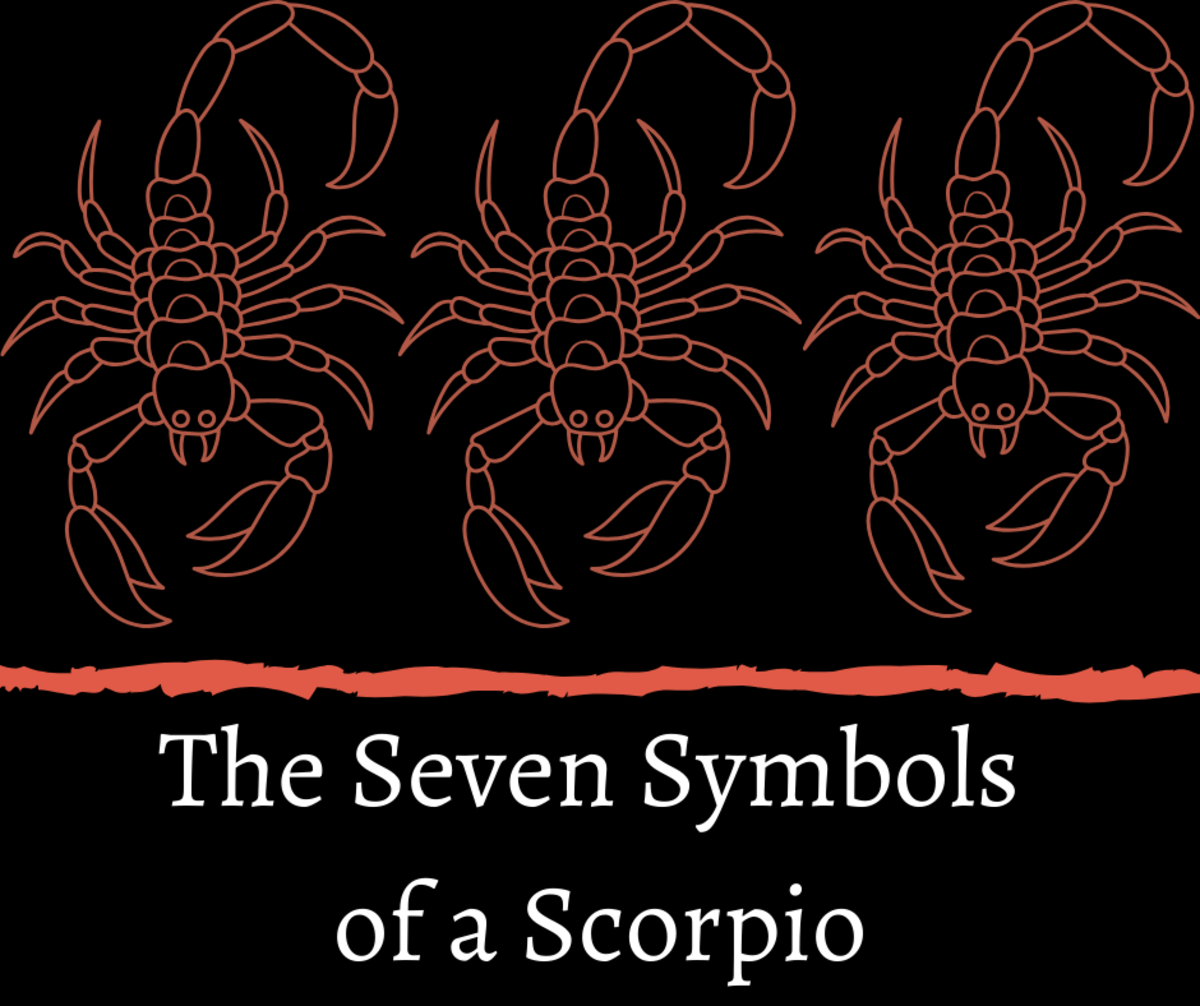A State of Disarray
A State of Disarray, Part I
Up to Israel's War of Independence
Undoubtedly though wrongly, recent futile attempts by the United States to resurrect the peace process, in addition to Israeli military retaliation for unrelenting rocket attacks from Gaza and the United Nations’ recognition of the Palestinian Authority as a nonmember state in 2012, have provided occasion for stoking the flames of worldwide anti-Israel sentiment and demanding an independent Palestinian state. Noticeably absent, however, from most of the anti-Israel camp’s imprecations of the Zionist boogeyman for preventing Palestinian statehood is discussion of why there has never been a Palestinian state in the first place. The facts of the historical record—facts that some Israel opponents’ hang-ups with their own history lead them to ignore—show that, much more than Israel, the Palestinians and their Arab neighbors bear the responsibility for Palestinian statelessness.
As much of the world seems to have forgotten, the Palestinians once had an opportunity to establish their own state. When the United Nations voted to end the British Mandate in Palestine on November 29, 1947, it called for the creation of Israel on slightly more than half of its territory and an Arab state on slightly less than half. The Palestinians attacked the yishuv of Eretz Yisrael almost immediately after the UN’s decision, however, before either state came into existence, and surrounding Arab countries invaded after Israel proclaimed its independence on May 14, 1948. In the resulting struggle, the Palestinian state envisioned by the United Nations never got off the ground.
One reason might be the massive flight of refugees out of the country, which Howard M. Sachar’s A History of Israel: From the Rise of Zionism to Our Time and Martin Gilbert’s Israel: A History document was predominantly voluntary; even John Bagot Glubb, the British field commander of Jordan’s Arab Legion during Israel’s War of Independence, attested in the London Daily Mail, “‘Villages were frequently abandoned even before they were threatened by the progress of war.’” One can hardly blame the Palestinian masses for leaving when the greater part of the country’s Arab elite departed for neighboring countries early in the hostilities. “The semifeudal character of Arab society rendered the illiterate fellah almost entirely dependent on the landlord and cadi [Muslim religious judge], and once this elite was gone, the Arab peasant was terrified by the likelihood of remaining in an institutional and cultural void,” Sachar explains. Their leaders’ prioritization of personal security above their people’s welfare deprived the people of the stable civil society necessary for a functional state.
Perhaps the Palestinian upper class didn’t evince commitment to its country and people because the Palestinians themselves lacked much sense of nationhood. Gilbert’s history, as well as Rabbi Joseph Telushkin’s Jewish Literacy, inform us that until modern times the Arab world and the Ottoman Empire treated the Holy Land as a region of Syria and its Arab residents as Syrians. “While Arab banditry was an endless harassment to the Zionist colonies” early in the movement, Sachar explains, “it signified no particular nationalist animus.” He elaborates that Palestinian nationalism emerged as a force to be reckoned with only in the wake of World War I—perhaps the British Mandate severing Palestine jurisdictionally from Syria, which fell under French rule, provided a catalyst. Even then, such nationalism was a Syrian transplant:
… it followed the lead of Arab politicians in Damascus during the unsuccessful 1919-20 effort to establish an independent Syrian kingdom. Accordingly, the collapse of Feisal’s regime in the summer of 1920, and the transfer of nationalist headquarters from Damascus to Jerusalem, played a key role in the development of an authentic Palestine Arab nationalism. It did not escape the Arab leadership … that the Zionists, as a minority settlement, were surely more vulnerable to concerted resistance than were the French or British.
Since nationalism had been somewhat artificially and so recently grafted onto the Palestinian community, it hadn’t worked its way down to the mass level by the time of the partition vote; the Palestinians were fighting the nascent State of Israel for the sake of the Holy Land’s Arab community but not necessarily with the aim of a greater Arab State of Palestine. The formation of a Palestinian state would have had to be predicated upon a common distinct national identity,which remained too much a novelty to the country’s Arabs to be widely espoused.
A history of internal divisiveness more directly stymied the establishment of a Palestinian state after the partition vote. The two most prominent Arab families in Palestine, the Husseinis and the Nashashibis, had long vied for the prestige of public office. This rivalry, continued in the days of the Mandate by the Grand Mufti of Jerusalem, Haj Muhammad Amin al-Husseini, and Naghib Bey al-Nashashibi, “helped keep the nationalist movement in abeyance,” as Sachar writes. Nor were they the only players on the Palestinian scene, for “a handful of other organizations developed in the early 1930s. Whatever their titles—National Bloc party, Istiqlal party, Arab Youth Congress, Reform party—none was a political party in the Western sense; all were merely groupings self-interestedly attached to ambitious individual families.” Since the differences among these groups sprangfrom personal power-hunger and chauvinistic clannishness, their members had no interest in building coalitions or consensus for the greater good of their movement: “the family rivalries partially immobilized any effective united action against either the Zionists or the British.” Even more critical in the period after the partition vote was the military disunity between the Palestinians and the other Arab forces. Before the Arab nations’ regular armies attacked Israel, the Arab League organized an “Arab Liberation Army” of volunteers from across the Middle East to aid the Palestinians in their fight. The Mufti, however, “was determined to retain effective personal control over all Arab forces in Palestine,” Sachar tells us, and felt upstaged by the Arab Liberation Army’s commander in the field, Fawzi al-Qawukji—so, for the most part, he refused to coordinate his operations with Qawukji’s.
“One city or village may fall to the enemy while the next village stands idle and careless,” wrote one participant. “Each faction operates separately and independently of the others.” … The factional hostility became so bitter that a tacit understanding actually was reached between Qawukji and the Haganah for the Arab Liberation Army to refrain from supporting Abd al-Qadr [commander of the Mufti’s troops in Jerusalem] if the Jews attacked on the Jerusalem front.
The Arabs all but doomed themselves to failure by facing the Jews as a balkanized collection of mavericks as antagonistic to one another as to their shared enemy, instead of in a solid united front.
But the Palestinians’ biggest Achilles’ heel after the UN partition vote, in the arenas of both politics and warfare, was sheer incompetence. Sachar attests that they had regularly squandered opportunities under the British Mandate to prepare for independence: “During the entire mandatory period, Arab leaders had refused to cooperate with the British in any scheme of national autonomy as long as the Jews were similarly included.” Nor did they create the kind of communal governing bodies that the Jews did in the Knesset Yisrael (the internal pre-State parliament of the yishuv) and the Jewish Agency. “At no time had the Supreme Moslem Council or the Arab Higher Committee ever served as more than organs of propaganda or violence. Neither organization had provided administrative training or governmental experience.” Accordingly, when the British abandoned responsibility for public services between the UN partition vote and their departure from Palestine, they created an administrative vacuum in the Arab areas of the country that the Arabs could not fill. The Palestinian military effort was downright ludicrous, moreover. As strident as the Mufti was in his desire to drive the Jews out of the Holy Land and take control of the country himself, he had no clue how to practically realize that vision.
Haj Amin simply undertook to operate on his own, and appointed his personal lieutenants as commanders in various parts of the country. He did a bad job of it. His officers failed to impose general conscription among the Palestine Arabs. As a result, the local defense forces were all volunteers, most of them irregulars operating without central direction or discipline.
Although these troops had volunteered for service, “[m]utinies and desertions, often of entire units, were not uncommon among both Qawukji’s followers and the Mufti’s,” reflecting how uncommitted the Palestinians were to self-rule.

A State of Disarray Part II
From Israel's War of Independence to the Six-Day War
Nonetheless, the invasion of surrounding Arab countries in May 1948 ultimately sealed the fate of Palestinian statehood. For all their rhetoric about Arab solidarity, the other nations intervened against Israel more out of opportunistic self-interest; King Abdullah of Jordan wanted to extend his rule to the Arab-inhabited regions of Palestine, while the “Syrians, on the other hand, were determined to seize as much as they could of northern Palestine, preempting this area from the Arab Legion,” according to Sachar. King Abdullah proved adamant in his expansionism: “Under no circumstances would he countenance a Palestinian government, with or without the Mufti.” In fact, Jordan and Egypt suppressed the one feeble attempt at establishing a Palestinian state, made nearly a year after the partition vote. Sachar and Gilbert relate that in September Egypt, attempting to outjockey Jordan for control and influence in Palestine, sponsored the formation of an “All-Palestine Government” in Gaza, which, on October 1, elected the Grand Mufti as its president. “King Abdullah of Transjordan immediately denounced the All-Palestine government,” writes Gilbert, “which would not, he said, be allowed jurisdiction in any of the areas under control of the Arab Legion.” Not long afterwards, Egypt itself quashed its puppet regime when the Mufti, always acting as his own worst enemy, “himself eagerly visited Gaza, against the orders of the Cairo government,” Sachar narrates.“Upon being recognized, the Mufti was immediately seized by military authorities, driven to Suez, and placed under tight surveillance there.” It’s not clear what Egypt found so undesirable about the Mufti going to Gaza, other than demonstrating that he wouldn’t do what Egypt wanted. In any case, in the negotiations that ended Israel’s War of Independence, Jordan and Egypt chose to disregard the United Nations’ original plan for a Palestinian state, instead annexing the areas of Eretz Yisrael occupied by their armies—Jordan the West Bank, Egypt the Gaza Strip.
So it was that when Israel conquered these areas in the Six-Day War, they were not, in terms of international law, inhabited by “Palestinians.” Their people were Jordanians and Egyptians—enemy nationals. The locals still did not conceive of themselves as members of a distinct, integral Palestinian nation; “after nineteen years of Jordanian rule the majority of West Bank citizens sustained a kind of unenthusiastic loyalty to the Hashemite ruler,” comments Sachar. There were also great differences in social and political attitudes among the population:
Under Hashemite rule, the West Bank had been divided into separate districts. One revolved around conservative Hebron in the south, a community so intensely traditionalist that it remained even without a movie theater. The second was metropolitan Jerusalem in the center, exposed to the European influences of foreign consulates and missionaries. Finally, there was radical-nationalist Nablus in the north, its citizens devoted admirers of Nasser. Very little mutuality of outlook existed among these sectors, or between the older, more moderate Palestinian notables and the younger generation, who returned from universities in Egypt or elsewhere with new and varied outlooks.
Thus, although Israeli Prime Minister Levi Eshkol did explore the possibility of self-government for the Occupied Territories, “by 1969 it was equally plain to Eshkol and his advisers that an understanding no longer could take the form of a separate, autonomous Palestinian entity. To begin with, there simply was no ‘Palestinian entity.’” Sachar illustrates that the Arabs in the territories agreed: “In August 1967 eighty-two West Bank notables signed an open manifesto berating as ludicrous the attempts to create a Palestinian entity.”

A State of Disarray Part III
The Two Intifadas and After
In time, however, the Arabs of the Occupied Territories did develop a sense of Palestinian identity and a desire to realize that identity through political self-determination, forcing Israel to consider these developments through the first intifada. The Oslo Accords were meant to accommodate this new national identity. Perhaps the Israeli government should have suspected that Yasser Arafat entered into the agreement in less than good faith when he provided the lynchpin to the deal, official PLO recognition of Israel’s right to exist and renunciation of terrorism, only days before the agreement was signed. Gilbert recounts a further instance of Arafat’s procedural obstructionism when a later phase of the peace process was solemnized in Cairo: with news cameras rolling, Arafat refused to sign some of the documents until the international dignitaries present gave him an off-camera tongue-lashing. “For the Israeli public, it was a worrying display of Arafat’s volatility. But for the Palestinians, and for many in the Arab world, it showed—as probably Arafat intended—that he would not agree without some sort of protest … even though it was what he and his senior advisers had agreed to after lengthy negotiations.”
Sure enough, Arafat proved unwilling or unable to curb the spate of Hamas terrorism in the mid-1990s when it threatened to derail the peace process. Hamas official Mahmoud Zohar’s 2010 statement that Arafat ordered Hamas to carry out terrorist acts at the start of the second intifada in 2000 makes one wonder whether Arafat was behind the earlier terrorism all along. Arafat began to show his true colors, as Gilbert writes, when he made a condolence visit to the parents of a suicide bus bomber, and when the Palestinian Authority condemned Israel’s sealing the borders of the Occupied Territories in the bombing’s aftermath without condemning the bombing itself. Sachar records more substantial violations of the Oslo Accords:
For that matter, the Palestine Authority in Gaza was surreptitiously and illegally developing “foreign policy” contacts with other nations. What purpose was served by Arafat’s repeated declarations that he intended to accelerate West Bank elections for a Palestinian “parliament,” rather than the administrative council envisaged in the Declaration of Principles? In East Jerusalem, meanwhile, Feisal al-Husseini and other Palestinian notables were quietly transforming their political headquarters in Orient House into a kind of provisional government for the West Bank—another egregious violation.
If Palestinians complained that Prime Minister Binyamin Netanyahu’s expansion of existing West Bank settlements went against the spirit of the Oslo Accords (which actually said nothing about restricting settlements) and that construction of the Jewish Har Homa neighborhood in East Jerusalem went against their letter, Israelis could point to these acts of the PA as initiating departure from the path the agreement outlined.
The second intifada, of course, pulled the plug on Israel’s cooperation in the process toward Palestinian statehood. Imad Falouji, then communications minister of the PA, and Arafat’s widow Suha have publicly stated that Arafat planned the intifada immediately after the Camp David talks, two months before the Ariel Sharon visit to the Temple Mount originally bandied about as its trigger. At Camp David, Prime Minister Ehud Barak presented an offer unprecedented in its generosity: “A Palestinian State would be established on more than 90 per cent of the West Bank and 100 per cent of the Gaza Strip,” Gilbert describes.“Israel also offered to remove all Israeli settlements in the Gaza Strip and almost all those on the West Bank,” while “transfer of pre-1967 Israeli land just south of the West Bank to the Palestinian State would be compensation for the minor modifications of the Green Line.” Barak even made some concessions on the previously non-negotiable issue of Jerusalem, which, “while remaining under Israeli sovereignty, would be divided between its Jewish and Arab inhabitants, with a strong measure of Palestinian control over the Arab sections.” Israel handed Arafat the ostensible final goal of the Oslo process, a Palestinian state—and Arafat threw it away, seemingly missing the point of a Palestinian state by “insisting that all Palestinian refugees, including the children and grandchildren of the original refugees, be allowed to return to their original homes” inside Israel proper. “Most of those homes no longer existed,” many having been used to house the hundreds of thousands of Jews who fled persecution and violence in Arab countries after Israel’s creation. As with his predecessor (and relative) the Mufti, Arafat’s intransigence and reliance on violence thwarted him from attaininghis goals.
Worse, the Palestinian people ratified Arafat’s abandonment of the Oslo principles after his death when they elected the terrorist organization Hamas to a majority in the Palestinian Authority’s legislature in 2006. The election results, unlike the intifada, could not be attributed to Arafat’s thrall over the Palestinian administration and populace; the Palestinians freely chose to repudiate the condition on which they had been offered the opportunity to govern themselves. One might argue that they turned to Hamas out of anger at Fatah corruption, but the very absence of a pro-peace reformist alternative in the elections shows that the Palestinians loved terror more than the prospect of their own state.
Lack of transparency, coupled with ineptitude, has indeed characterized the PA. Sachar relates an early bid for economic aid that would be funny if it weren’t so sad:
With Israel’s encouragement … Arafat turned for help to the EEC and the World Bank. These sources in fact were prepared to arrange a $2.1 billion, five-year loan. They asked only a reasonable schedule of supervised accountability. It was a commitment Arafat was unwilling to make…. Arriving from Egypt with uniforms and suitcases, the Palestine police found themselves without assured salaries, even without living quarters. Months passed before Arafat finally relented …
Twenty years of such economic aid has borne little fruit. Arab writer Hisham Jarallah, in an article for the Gatestone Institute’s website, testifies, “The Palestinians could have built one of the best economies in the region after the beginning of the peace process in 1993. But instead of using the billions of dollars that were given to them by Americans and Europeans to create new jobs, the PLO leadership stole most of the funds and later blamed Israel for damaging the Palestinian economy.” Since their own economy can’t support them, Palestinians are increasingly turning to their only other option; “Palestinians say, in fact, that Israel is becoming one of the largest employers of Palestinians in the Middle East,” writes Jarallah, reporting in August 2012 that 80,000 Palestinians worked in Israel and Israeli settlements in the West Bank and that Israel had just issued 10,000 more work permits to Palestinians. Hostile though the Palestinians are to Israel, they still have to put food on their tables. Clearly, with its people lining up for jobs in what would become a foreign country, the PA lacks the economic self-sufficiency to make an independent state viable. Hamas’s takeover of the Gaza Strip, tantamount to its secession from the PA (and which makes me skeptical of the PA’s new Fatah-Hamas unity government), furthermore demonstrates the Palestinians’ continued fragmented factionalism, and the PA’s inability to overcome internal political challenges. All these factors—divisiveness, incompetence, and bad faith both with Israel and with their own people—mean that the Palestinians, despite the autonomous administration of the PA, are little more prepared for a state now than they were in 1947-49.
Works Cited
Abu Toameh, Khaled. "Arafat Ordered Hamas Attacks Against Israel in 2000." Jerusalem Post. The Jerusalem Post, 28 September 2010. Web. 19 February 2013.
Bard, Mitchell. "The Palestinian Refugees." Jewish Virtual Library: History. The American-Israeli Cooperative Enterprise, n.d. Web. 22 February 2013.
Chandler, Adam. "Suha Arafat Exhumes Truth About Intifada." The Scroll: Tablet Magazine On The News 31 December 2012. Web. 19 February 2013.
Gilbert, Martin. Israel: A History. New York: HarperCollins, 2008.
Jarallah, Hisham. "How Palestinians Keep Shooting Themselves in the Foot." Gatestone Institute. The Gatestone Institute, 17 August 2012. Web. 19 February 2013.
Sachar, Howard M. A History of Israel: From the Rise of Zionism to Our Time. New York: Alfred A. Knopf, 2007.
Telushkin, Joseph. Jewish Literacy. New York: William Morrow and Company, 1991.
"Text: 1993 Declaration of Principles." BBC News: Middle East. British Broadcasting Corporation, 29 November 2001. Web. 5 March 2013.








